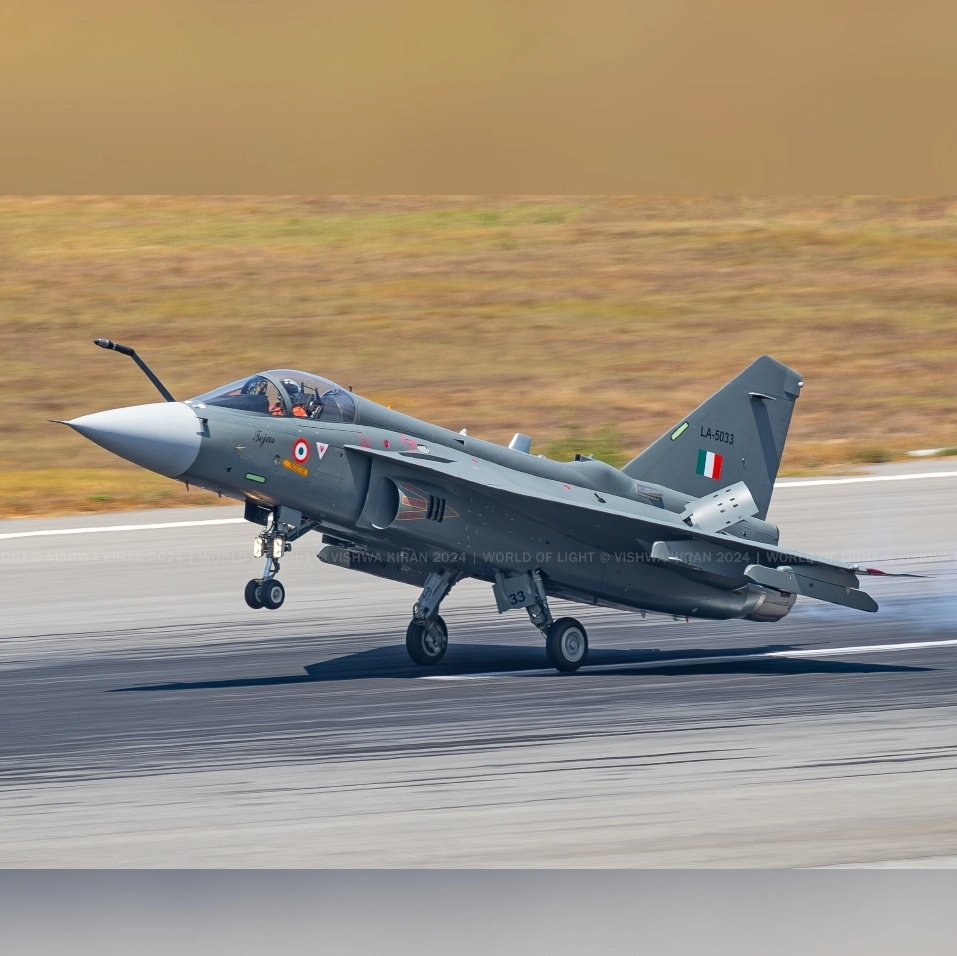- Views: 4K
- Replies: 41

The Tejas Mk1A fighter aircraft (designated LA5033) is in active development, and recent observations reveal several intriguing structural modifications compared to its Mk1 predecessor.
These changes offer a glimpse into the ongoing improvements that will shape this upgraded variant of India's indigenously developed multi-role fighter.
Potential Enhancements to Situational Awareness
- Missing RWR Sensors: The vertical tail of the Mk1A appears to lack the Radar Warning Receiver (RWR) sensors seen on previous Mk1 models. This absence suggests either a relocation of these sensors or the integration of an entirely new RWR system. Either change would potentially enhance the Tejas Mk1A's ability to detect and respond to threats more effectively.
Communication and Navigation Upgrades
- New APU Air Intake Antenna: A previously unseen antenna now resides within the Auxiliary Power Unit (APU) air intake. This modification hints at either upgraded communication systems or potential enhancements to identification friend-or-foe (IFF) capabilities.
- SDR Antenna Repositioning: The Forward V/UHF antenna has been repositioned, signaling possible adjustments to communication and navigation systems. The Mk1A may also utilize the B-NET Software Defined Radio (SDR) seen on previous Mk1 variants. This SDR, likely procured from Israel, is widely known for delivering secure communications.
Engine Enhancements for Optimal Performance
- Possible 3-Door Auxiliary Air Intake: The most significant change is a potential redesign of the auxiliary air intake system. Speculation centers on a 3-door configuration that could optimize airflow to the engine, particularly at high altitudes. Such a change could lead to increased engine power and overall performance improvement.
- AESA Radar Integration: As previously confirmed, the Tejas Mk1A will incorporate the ELM-2052 Active Electronically Scanned Array (AESA) radar from Israel. This upgrade provides superior range, tracking, and detection capabilities compared to previous radar systems used on the Tejas platform.
Conclusion
The observed changes on the Tejas Mk1A LA5033 prototype speak to HAL's commitment to improving the aircraft's capabilities across several key areas.These refinements have the potential to enhance the Mk1A's situational awareness, communication, navigation, engine performance, and overall combat effectiveness due to advanced avionics integration.
